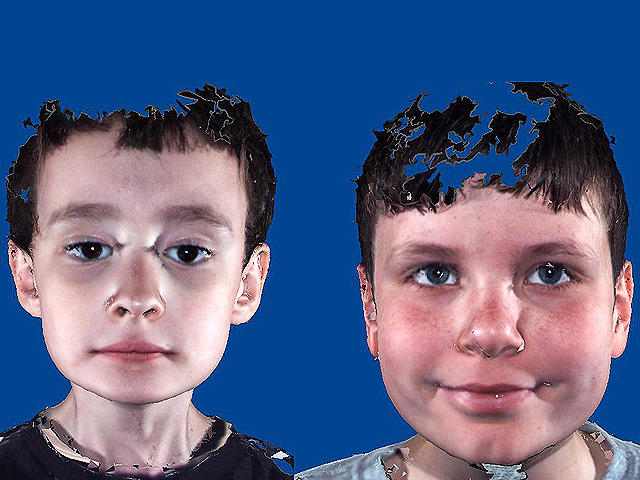is putting things in mouth a sign of autism
Have your child practice identifying things that are safe and edible versus dangerous and not for eating. In other words these behaviors feel good.

Putting Things In My Mouth Social Story
My clinical experience has taught me that these children are not using mouthing to learn about the mouth.

. It is developmentally appropriate and expected to see a young baby or toddler putting items in his mouth this is one of the main ways babies begin to explore the world. Signs that your son may be such a sensory seeker may include. A child who bites chews or sucks on non-edible objects may be feeding a deep oral desire.
Just like sniffing mouthing and licking might be another way for an ASD child to explore the world around them. Oral sensory seeking where a child continues to put things in their mouth after the age of two is commonly reported alongside sensory issues autism developmental. It is a highly common play behavior known as a positioning schema.
When a young child is upset we frequently give them oral motor input like a pacifier or a bottle. Find Out 20 Symptoms Of Autism18 Is So Important. Putting items into his mouth playing with his saliva and walking on his toes most likely gives him sensory input.
Ad Check out these 20 common symptoms that may indicate you have autism. Taken in isolation lining things up in play is not an indicator of autism. Sandy Horna Physical Therapist explains that your son is most likely mouthing items because he is seeking sensation that his central nervous system is not providing to his mouth.
Here are 11 of the most common. Having difficulty keeping his hands to himself. When sensory processing is dysfunctional children typically seek or avoid certain sensations around the lips tongue and mouth.
It can also be a comforting habit. Tongue tie lip tie mouth breathing bed-wetting ADD or ADHD gum problems including chronic inflammation crowded teeth high narrow palate allergies immune system issues anxiety aggression poor sleepall of these can be causes andor consequences of improper breathing and are often interconnected problems. While stimming most commonly refers to the repetitive behaviors in autistic people those who are not autistic can stim too.
Its how they learn to laugh eat and play. Is lining things up a sign of autism. Check out now the facts you probably did not know about.
Babies and toddlers love to imitate the actions of others. They may use their fingertips to grasp a hairbrush or spoon and avoid stabilizing work materials such as paper while writing. Not unless the self-stimulatory behaviour is impacting learning or harmful to your child or others eg.
In particular I recommend activities that keep her hands busy. But kids showing signs of autism imitate others infrequently. She suggests giving your son a vibrating.
Proper breathing is crucial to good health. Oral input is calming. Hopefully she grows out of it.
They are mouthing to regulate their behavior. A child with sensory issues may enjoy sour and chewy Starburst candies or spicy Buffalo wings because he finds these foods stimulating but oral sensory seeking that involves the unsanitary and even dangerous habits of licking and biting. The main difference is that when stimming is linked to autism the type or quantity of behaviors matters.
This is one of the most common early warning signs of autism. We share three things you can do to keep this behaviour under control as well as two play activities that can help your child with their behaviour. Seeking constant visual stimulation signs can include becoming excited at stimulating sights such as merry-go rounds whirring fans and bright lights.
Having difficulty holding still hyperactivity being attracted to strong smells. First a lot of children with Autism will naturally reduce their own stimming behaviours as they get older. Perhaps as someone else has suggested get her some stim toys that are made to be chewed that may at least act as a diversion and reduce her putting inappropriate items into her mouth.
Ad Learn About the Common Symptoms of Aspergers Syndrome and How to Treat Them. For example tapping your foot when youre nervous could be an example of stimming. Second a child will be using stims for a reason.
Has trouble bringing things to mouth. Consider working with a behavior specialist. Tia often puts objects in her mouth such as food toys or sticks.
A child demonstrating this but few other common autistic signs is highly unlikely to have autism. Individuals with autism and other developmental disabilities may demonstrate atypical grasp patterns and manipulation skills resulting from tactile defensiveness and decreased hand strength muscle tone and coordination. Children on the autism spectrum often use mouthing the same way they use hand flapping finger twisting rocking and other forms of sensory self-regulation.
A major problem that a child on the autism spectrum may have is with proper sensory processing. Teach her to differentiate food from non-food. As the brain receives information from the senses it sends the wrong messages to the rest of the body.
Spends a lot of time lining things up or putting things in a certain order and gets upset if this is disrupted. Bitter receptors are located at the back of the tongue to give warning not to swallow and to expel dangerous or poisonous substances. That alone will reduce her tendency to put things in her mouth.
As youve posted on here though Im assuming that your daughter does have Autism and that this is a sensory seeking behaviour. Bitter receptors are located at the back of the tongue to give warning not to swallow and to expel dangerous or poisonous substances. Lack of crying lack of movement and lack of interest in surroundings often the baby seems comfortable showing no sign of distress hunger etc.
Children on the autism spectrum often use mouthing the same way they use hand flapping finger twisting rocking and other forms of sensory self-regulation. Make sure you know every sign of Aspergers. A positional schema means a child is interested in order and sequencing.
But three fairly common issues tend to contribute to pica in those with autism. Offer the spoon but dont put.

Autism Chew Toys Guidance On Sensory Chew Toys Pingree Center
My Child Seems To Put Everything Into His Mouth Special Needs Resource

Toddler Sign Language Chart Sign Language Can Help Many Children Learn To Talk Commun Sign Language Phrases Sign Language For Kids Sign Language For Toddlers

This Is Why I Boycottautismspeaks By Erin Human

Sensory Processing In Children With Autism Licking Behavior

Is It Autism Facial Features That Show Disorder

Is Tongue Thrust A Sign Of Autism Santa Cruz Scotts Valley Ca

Why Does My Older Child Chew On Everything Anxiety In Children Childhood Behavior Sensory Diet

Autism Dilemma Chewing Swallowing Objects Autism Speaks

Mouths Are Not For Spitting Social Narrative

Taste Safe Sensory Play Ideas For Babies Toddlers And Older Kids Best Toys 4 Toddlers

Mouthing Objects Association For Science In Autism Treatment

My Asd Child Oral Sensitivity In Children With Aspergers And High Functioning Autism

The Ultimate List Of Sensory Toys For Autistic Children On The Planet




